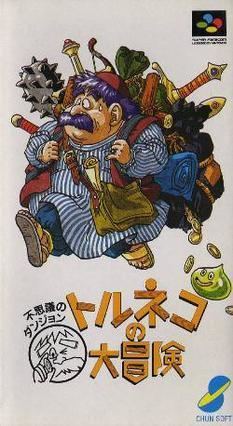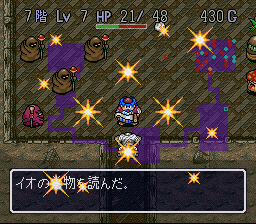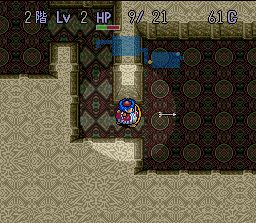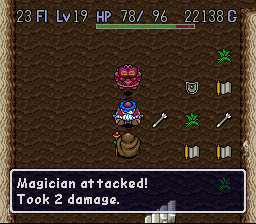9 /10 1 Votes
Composer(s) Koichi Sugiyama Initial release date 19 September 1993 Publishers Chunsoft, Enix | 4.5/5 Emuparadise Mode(s) Single-player Designer Koichi Sugiyama | |||||||||||||||||||||||||||||||||
 | ||||||||||||||||||||||||||||||||||
Genre(s) Role-playing video game
roguelike Platform Super Nintendo Entertainment System Series Dragon Quest, Mystery Dungeon Developers Chunsoft, Spike Chunsoft Co., Ltd. Similar Mystery Dungeon games, Enix games, Roguelike games | ||||||||||||||||||||||||||||||||||
Let s play taloon s great adventure part 1
Torneko no Daibōken: Fushigi no Dungeon (トルネコの大冒険 不思議のダンジョン, Torneko's Great Adventure: Mystery Dungeon) is the first game in the Mystery Dungeon series. This installment features Torneko (or Taloon, as he was known in North America), the merchant from Dragon Warrior IV. The game involves Torneko adventuring around in the "Mystery Dungeon" in search of items.
Contents
- Let s play taloon s great adventure part 1
- Torneko no daibouken 2 advance trailer
- Gameplay
- Development
- Music
- Release
- Reception
- References

Torneko no daibouken 2 advance trailer
Gameplay

The gameplay is similar to roguelike style PC games. The main similarity is the heavy use of randomized dungeons and effects. The main character of the game is Torneko, originally localized as Taloon in North America, a merchant playable character from Dragon Warrior IV. The game continues Torneko's story from Dragon Quest IV, where he wishes to make his store famous and ventures into mystery dungeons to retrieve items to stock in his store.

While Torneko explores the dungeon, he collects items and fights monsters, similar to the ones found in Dragon Quest games. If Torneko leaves the dungeon, he can sell off the items he found. He can also equip certain items found in the dungeon. By saving up money, Torneko can improve his home and shop.
Development

Torneko was developed by Chunsoft, the developers for the first five Dragon Quest games. It was the first game in the Mystery Dungeon series of roguelike games, of which over 25 have been produced, including 5 Dragon Quest spinoffs. A PAL prototype originating in Germany was unearthed, proving that it was far in development. [1]
Music

As with other games in the Dragon Quest series, the musical score for the game was written by Koichi Sugiyama. Sony Records released the soundtrack, titled Suite Torneko's Great Adventure: Musical Chemistry, on October 21, 1993 in Japan. It contains eight arranged tracks performed by a chamber orchestra, as well as three tracks containing original game music. The album was reprinted on October 7, 2009. Two pieces of music from the game were performed by the Tokyo City Philharmonic Orchestra at the Game Music Concert 3 the year of the game's release.
Release
The game was promoted with an exceptionally high budget television commercial. It had a running time of 30 seconds (unusually long for Japanese commercials of the time) and consisted almost entirely of claymation footage filmed to run at 24 frames per second.
Reception
In November 1993, Famitsu magazine's Reader Cross Review gave the game a 9 out of 10. In 2006, the game was voted number 78 by the readers of Famitsu magazine in its top 100 games of all time. The game spawned two sequels starring Torneko, Torneko: The Last Hope in 1999 and Dragon Quest Characters: Torneko no Daibōken 3 in 2002.
